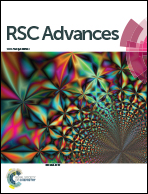Diazaspiro-iminosugars and polyhydroxylated spiro-bislactams: synthesis, glycosidase inhibition and molecular docking studies†
Abstract
Synthesis of a new class of iminosugars 1–4 has been reported. The Jocic–Reeve and Corey–Link approach with α-D-glucofuranos-3-ulose 5 afforded 3-azidoaldehyde 7 that was converted to the γ-lactam 9. Reductive aminocyclisation and Schmidt–Boyer reactions were used to get spiro-iminosugars 1–4 which showed selective and potent glycosidase inhibitory activities. Molecular docking studies support the activity data.


 Please wait while we load your content...
Please wait while we load your content...